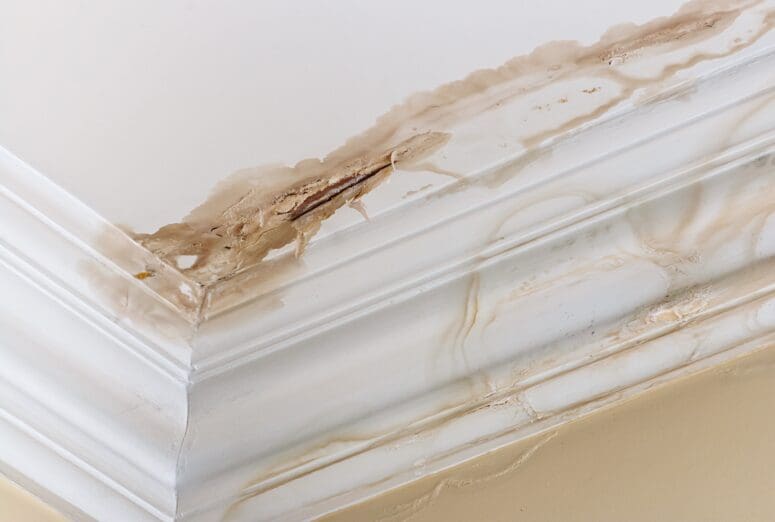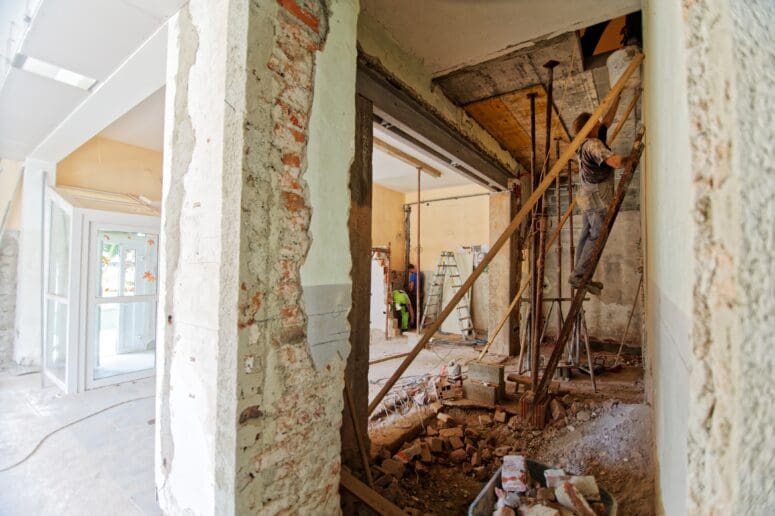Put Down the Hammer! The Best Ways to Increase Home Value Are Functional, Not Cosmetic
- Published on
-
 Larissa Runkle Contributing AuthorClose
Larissa Runkle Contributing AuthorClose Larissa Runkle Contributing Author
Larissa Runkle Contributing AuthorLarissa is a writer living on the road, originally from MA. She divides her time between editorial writing and content creation for brands and is well-versed in the subjects of home staging, open houses, and selling a home.
Tempted to splurge on a new granite countertop and high-end cabinetry in the hopes they’ll increase your property value? Stop… remodeling projects are a tricky business and buyer expectations change drastically from location to location.
Homeowners often spend thousands on pre-sale home remodels, only to realize that they’ll see a mere fraction return on that investment (or ROI) when it comes time to sell.
After substantial research and interviews with leading real estate agents, we’ve got the intel you need to prioritize function over flair—and increase your home value before a sale without losing any money. Read on for expert advice that will ensure you choose your projects wisely, with a focus on the money-making changes you won’t regret down the line.
Before You Add Upgrades to Your Home, Find Out What’s Wrong With it
Understanding what repairs your home needs is the first step in smart renovation.
Homeowners often have the wrong impression that cosmetic features are what buyers care about most.
While appearance matters, top-selling real estate agent Dawn Rushton of Maple Valley, Washington, tells us that repairing any functional issues in your home should come first.
Rushton, who ranks in the top 3% of local agents, encourages her clients to consider things like crawl spaces and the state of their roof before moving on to more aesthetic home features.
“Make sure crawl spaces are clean and dry, and make sure the roof is in decent condition, and the gutters are cleaned and not leaking,” she says, “the house has to be as clean as you can make it, and structurally sound.”

While these might sound like basic fixes, you’d be surprised at the number of homeowners who waste money on pricey updates in perfectly functional spaces, only to have a buyer come along and notice expensive repairs that need to be made elsewhere—or gut the entire space because it doesn’t suit their taste upon moving in.
Which is why, before blowing your budget on a new kitchen, use that money to fix up any known issues and reserve some of your budget for any problems that could come up in the home inspection.
Once you get an offer on your home, the contract will be contingent on the home inspection, which opens the door for renegotiation. As the homeowner, you can also opt to get a pre-inspection to avoid any big surprises. That can give you a list of repairs to work from and address. But doing the pre-inspection means you are legally required to disclose the home inspection report to buyers, so it can open a real can of worms you weren’t expecting.
These are the seven major things home inspectors will check for that could impact your sale:
- Water Damage, costs an average $2,588 to fix
- Structural Issues, costs an average $4,005 to fix
- Old/Damaged Roof, costs an average $775 to repair, or $6,725 to $9,000 to replace
- Damaged Electrical System, costs an average $160-$500 to fix
- Plumbing Problems, costs an average $1,038 to fix
- Insect and Pest Infestation, costs an average $172 to fix
- Issues with the HVAC System, costs an average $163-$528 to replace
The key is you want the home to be in “lendable condition,” explains Rushton. “When a buyer comes and their inspector is up on that roof, saying no one has been keeping it up, that will be a problem.”
Being proactive about any functional repairs can also save you money. While patching up your roof might cost as much as $1,000, an unhappy inspector could alternatively advise a complete roof replacement, which can cost anywhere from $6,000-$9,000.
In the same vein, hiring a professional to examine and clean up your crawl space may cost around $500-$700, where as an official crawl-space cleanup recommended in an inspection report could cost you upward of $6,000.
“Inspectors have cameras and take photos of rodents down there and show it to buyers who are horrified,” says Rushton. “A lot of money can be saved by just taking time to look at the condition.”
Is An Expensive Remodel Right For You?
The thing about remodels is that they don’t always make sense financially.
Sure, everyone loves a new kitchen or bathroom, but an older one that still works won’t necessarily stop a buyer from purchasing your home.
Unless strictly necessary, you should avoid larger remodel projects that have terrible ROI. For example, the average bathroom remodel costs homeowners around $62,000, with their returned value only coming in at a little over half of that—$35,000.
One big factor that makes a difference is how long you plan to stay in the house.
“If someone calls me and wants to sell a house in 30-90 days, and asks about remodeling the kitchen, I tell them it won’t be worth the money and time,” says Rushton. “But if someone wants to sell in three to five years then I say by all means go ahead, enjoy the kitchen for a few years then sell and get your money’s worth. It’s the same with bathrooms.”
Another thing to keep in mind is that not all remodeling projects have to cost thousands.
If you and your real estate agent really feel that a central space (such as the bathroom) could use some attention, there are always cheap upgrades you can make.
Jeanne Baron of award-winning home advice site ThisOldHouse.com says, “Some upgrades are cheap, easy, and fast…especially in the bathroom. Replace frosted glass for clear glass, clean the grout, remove rust stains, apply fresh caulk, update door knobs and cabinet pulls, replace faucets, and install a low-flush toilet. Even buying a new toilet seat can make a difference.”

Cheap Upgrades That Maximize Your ROI
While some changes will depend on factors like your time remaining in a home, others are a straightforward win for sellers. Refreshing paint, carpeting, and landscaping as three easy inexpensive changes that provide can fetch you 100% ROI.
That’s not to mention the powerful effect that a deep cleaning can have on buyers coming though your home.
“It’s kind of the best lipstick you can have—that one thing that makes house smell better and look better,” says Rushton.
For a roughly 2,000 square-foot home, you might expect to pay anywhere between $6,000-$7,000 for partial carpet replacements with above FHA grade carpet. For a home of the same size, adding fresh paint to the walls might run you between $3,000 and $3,500. If your home is worth $400,000, the combined value of these investments could easily bump up your asking price up to 430k. “So now you’ve spent $8,000-$9,000” says Rushton, “but you’ve tripled your return.”
If you want to tackle these cheap upgrades, here’s how to get started:
Give Interior Rooms a Fresh Coat of Neutral Paint
- Decide which rooms need a paint refresh (such as those with loud colors) and set a project budget.
- Pick neutral, on-trend colors for rooms, such as hues that evoke coziness and minimalism from the Sherwin William’s Sincerity palette.
- Get the job done. An interior DIY paint job will cost you around $200-$300 per room. Want to hire out the project? No problem, check out our complete guide to finding legitimate house painters you can trust (and who will clean up after themselves!)
Upgrade Your Carpet or Flooring
- The best investment you can make is in hard-surface flooring, or high-grade carpet. At a minimum, we advise hardwood or laminate in living areas like the dining and living rooms (just stick to the same finish and type throughout the home). Carpet can work and even be desirable in areas like the basement and bedrooms.
- The company you purchase your flooring from will likely also offer installing services, which can be cheaper than hiring out a contractor. But you can’t always count on their work being quite as good (there may be limits on what they can do, like pull up your old flooring, depending on their qualifications.) Check out a site like Angie’s List for top-rated floor installation pros in your area.
- Install carpeting yourself with this step-by-step tutorial.
Spruce Up Your Landscaping and Curb Appeal
- Improve your curb appeal without spending a lot using simple hacks like adding fresh mulch, edging your lawn, and displaying tasteful lawn decorations.
- Trim up your landscaping by doing like the pros do to get a perfectly manicured lawn for less.
- Make your front entrance clean and inviting—check out these tips for enhancing your front door curb appeal with charming touches.
6 Easy Steps to Add Value to Your Home
Ultimately, you’ll want to work with a real estate agent to determine the value of your home before you spend any money on remodeling projects or repairs.
Follow these steps to get started increasing your home value:
- Hire a real estate agent early on to help establish the real market value of your home. They’ll provide you a comparative market analysis, a powerful tool that rounds up similar properties in your area to help determine your home’s value.
- Work with your agent to make any small repairs (that could raise eyebrows) before your home goes on the market. Focus on fixing up any already-known issues. Keep your estimated sell date in mind, and remember that some larger projects might not make sense if you’re planning to move soon.
- Come up with a budget! Don’t just start throwing money at projects. Establish a budget that feels comfortable, and ask your agent weigh in.
- Don’t forget about the three easy-win investments you can make: Paint, carpet/flooring, and landscaping. And remember that if your budget is tight, this is probably the best place to invest your money.
- When it comes to cosmetic changes in a home, fall back on DIY projects you can take on yourself to save money—and of course, don’t forget to stage the home before buyers see it.
- For more details on remodeling projects and their average return value, take a look at this report by Porch.com (which includes data from over half a million projects).
Article Image Source: (Milivoj Kuhar/ Unsplash)
